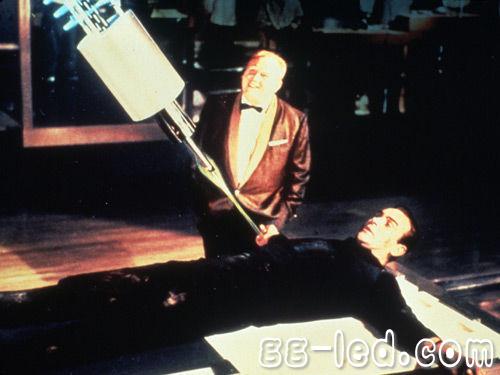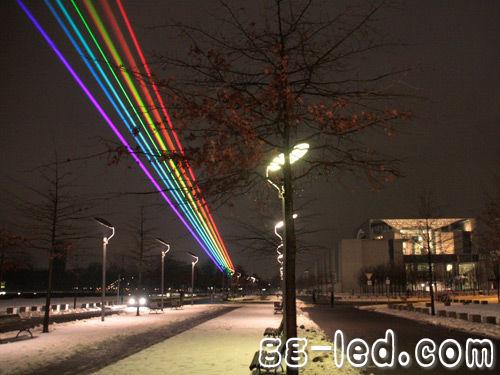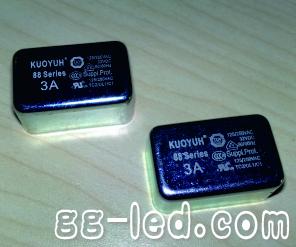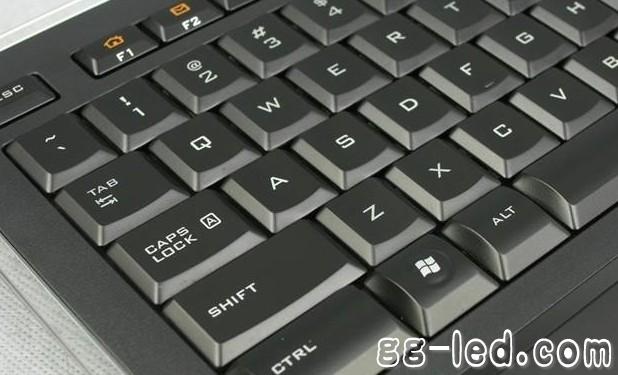It is reported that Guangdong Dazu Yueming Laser Technology Co., Ltd. (stock code 002008), a well-known listed company in the domestic laser industry, independently developed and launched the MUV UV laser marking machine series with independent intellectual property rights at the end of 2013, targeting global mid-to-high-end customers and price positioning. It is highly competitive and will gradually cover traditional fields such as leather, clothing, shoes, car interiors, luggage, furniture, craft gifts, advertising, lighting and lighting. Recently, there have also been major breakthroughs in the fields of smart phones, computers and accessories, medical packaging, etc., which have been well received and praised by customers.
50 years of laser UV attack
The laser wavelength extension application has been explored for more than half a century, from the "useless" at the time of its birth to the "endless" of today's application field. Despite the current inability to achieve any desired wavelength for humans, today's technology is changing with each passing day, creating a colorful laser world and a more colorful material life than ever before. Since the birth of the world's first (generational) laser ruby ​​laser in 1960, the krypton laser, which has been exposed to red light, has become the standard laser in the field of scientific research and measurement.

Mehman experiment: Wrapping the flash coil on the fingertip-sized ruby ​​rod, producing the first laser
Subsequently, although lasers covering the wavelength from the infrared to the ultraviolet region were available, they were not popularized. Until the introduction of semiconductor lasers in 1996, the laser entered the blue band of the spectrum. Today, blue semiconductor lasers are standard products, but green semiconductor lasers have been difficult to industrialize. At the photonics west 2010 conference in 2010, a company called startup kaai reported that it has developed a 523nm ingan semiconductor laser that fills the gap in the output spectrum of semiconductor lasers.

Today's laser sources provide a rich range of wavelengths, and nonlinear optics provide a powerful tool for generating new wavelengths. High-power femtosecond pulses of higher harmonics can produce coherent light in the extreme ultraviolet range.

UV laser classification
Except for free electron lasers, the basic working principles of various lasers are the same. The ultraviolet lasers we refer to are classified according to the range of the output wavelength band. They are mainly compared with infrared lasers and visible lasers. The infrared lasers and visible light are usually processed by local heating to melt or vaporize the materials, but this heating will be performed. The destruction of the surrounding material limits the edge strength and the ability to produce small, fine features. Ultraviolet lasers directly destroy the chemical bonds of the atomic components of the connected substances. This method called "cold" process does not produce heating to the periphery but directly separates the substances into atoms, and UV laser technology is becoming a new research and application hotspot. .

UV laser marking - electronic components
There are three main types of UV lasers. The first is a solid-state, Q-switched Nd:YAG laser; a special crystal is used to convert infrared 1064 nm light into ultraviolet 335 nm light. The shape of the beam is Gaussian, so the spot is circular and the energy gradually decreases from the center to the edge. Due to short wavelength and beam quality limitations, the beam can be focused on the order of 10 μm. In general, like a fully cured laser, the UV laser is very sensitive to temperature changes and takes up to 30 minutes to achieve adequate stability after a cold start. Therefore, these lasers typically have special standby conditions so that all critical components remain at operating temperature. High repetition rates and small focus spots are beginning to be applied in small, high quality processing areas.

UV Laser Marking - Consumer Electronics Accessories
The second type of ultraviolet laser is a gas laser, an excimer laser. The wavelength of the laser depends on the type of gas mixture used. The resulting beam is not round but rectangular, with a substantially uniform intensity across the beam and a sudden drop on the edge. Masking techniques can be used to create spots of different geometries. The details of the machining can be as small as a few microns, and the distance between the focused optical period and the workpiece can be as large as 50 to 100 mm. Holography can also be used to generate a specific beam energy pattern.
The third type of ultraviolet laser is a metal vapor laser. Although several other metal vapors can be used, copper steam is mainly used. Copper vapor lasers produce radiation at wavelengths of 511 nm and 578 nm. In addition, mixing and frequency doubling are used to generate ultraviolet radiation at wavelengths of 255 nm, 271 nm, and 289 nm. The beam distribution is Gaussian, which makes the laser suitable for the same range of applications as other solid-state UV lasers.

UV laser marking - consumer electronics accessories
UV laser advantages and applications
Like other types of lasers, UV lasers have a range of applications. Because of the other lasers: such as far infrared, CO2 does not have a "cold light source", the spot size is very small, power density, high efficiency, high quality and other advantages, become the first choice for high-demand customers, of course, the current price is not cheap. When it comes to the scope of application, there is actually no other laser popularization. Mentioned in the field of application, although currently mainly used in advanced research, development and industrial manufacturing equipment, but has been widely used in biotechnology and medical equipment, disinfection equipment requiring ultraviolet light radiation, and gradually into the field of micro-processing, such as printed circuit boards and Consumer Electronics.
In the future, UV laser technology will certainly lead to the development of a new generation of nanotechnology, materials science, biotechnology, chemical analysis, plasma physics and other disciplines, and continue to open up many new applications that have no technology available.
Hanzu Yueming---New Ideas of Ultraviolet Laser
The huge market potential and broad application prospects of UV laser technology have attracted some well-known domestic laser companies to take the lead in expanding this field. Every year, international and domestic authoritative light fairs, photonics exhibitions, electronic information fairs, as well as the all-round exhibitions, smart terminals and mobile internet industry exhibitions that have emerged in recent years, can capture the cutting-edge technology and innovative product information in this area.
It is reported that Guangdong Dazu Yueming Laser Technology Co., Ltd. (stock code 002008), a well-known listed company in the domestic laser industry, continues to lead in leather, clothing, shoes, automotive interiors, luggage, furniture, craft gifts, advertising, lighting, etc. for 14 years. In the traditional field, it leads the processing technology of laser cutting, engraving and marking. At the end of 2013, it independently developed and launched the MUV UV laser marking machine series with independent intellectual property rights, aiming at the global high-end customers, and the price positioning is very competitive. Gradual coverage has involved the industry. Recently, there have also been major breakthroughs in the fields of smart phones, computers and accessories, medical packaging, etc., which have been well received and praised by customers.
Next, Han's Yueming Laser will launch UV laser application products in FPC cutting, PCB marking, ITO etching, touch screen etching, LCD screen repair and other applications.
With the further research and development of laser technology, the performance of lasers will be further enhanced, the cost will be greatly reduced, and the application field will be expanded, which will bring us new technological changes and promote the leap of laser technology across the times.
Source: Guangdong Hanzu Yueming Laser Technology Co., Ltd. Liu Xingyu

Our Wired Backup Camera Systems come with waterproof night vision backup camera and varies of Rear View Mirror Monitor. The system will help you reversing conveniently and keep your vehicle safe. Suitable for RV`s, Pickup, Trailers, Trucks, Buses.
1,Wired Backup Camera System for Truck/Van/Caravan/Trailers/Camper/Pickup/5th Wheel/Bus.
2, 7/9/10.1 inch monitor has a pixel resolution of 800 x 480 and displayed is a sharp clear digital image. Monitor has 2 Channel Video Input; V1/V2 optional. PAL&NTSC for choose. Monitor automatically turns on and switch to Rear View Camera when reversing.
3, Backup camera Infrared Night (IR) Vision With 10/12/18/28infra-red lights, it will be able to see up to 50ft even in complete darkness. Using the latest generation of image sensor chip, excellent color effect.
4, Hard metal cased heavy duty camera with IP68 Waterproof and Mud proof, Designed and tested for extreme climates.
5, System comes complete with a 66'(20 Meters) cable with aircraft grade connections and all components necessary for installation.
Wired Backup Camera Systems
Backup Camera System,Wired Backup Camera Systems,Quad View Monitors,Wired Vehicle Backup Monitor
Shenzhen Sunveytech Co.,LTD , https://www.sunveytech.com